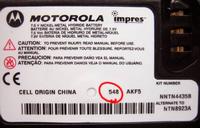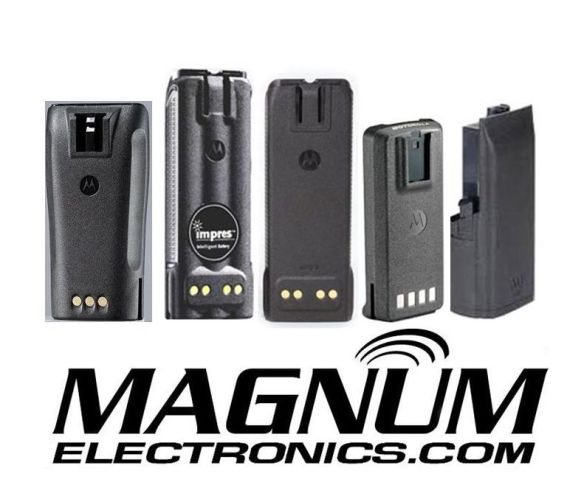It is that time again to check your radio batteries so you keep your communications loud and clear. Batteries begin to degrade after 18-24 months of use and can affect radio performance. Many intermittent radio problems are solved with a fresh battery.
How to Read a Motorola Battery Date Code
All Motorola batteries have a 3 digit date code on the battery label. Check the date code on your Motorola battery and if the first digit is a “0” or “9” it is a good time to replace it.
on your Motorola battery and if the first digit is a “0” or “9” it is a good time to replace it.
The first digit represents the “Year” and the next digits are the “Week” manufactured. For example; 036 is the 36th week of 2010.
All Motorola batteries carry a replacement warranty of at least a year after the date code and probably longer if marked IMPRES or contain NiCD cells.
Replacement Batteries for Motorola, Vertex, & Other Radio Manufacturers
We carry Motorola Original OEM, Vertex-Standard OEM, and Power Products batteries for all current and discontinued radio models.
Below are links to the most popular and recommended batteries:
- Link to APX 7000, APX 6000 batteries
- The NNTN7038 is our favorite because it packs 2,900 mAh capacity in a small size
- Link to XTS 5000, XTS 3000 batteries
- Li-ion NNTN6034 with 4,150 mAh is thinner, lighter and longer life
- Link to XTS 2500, XTS 1500, PR1500 batteries
- Li-ion NNTN7335 2,700 mAh has longest talk time
- Link to MOTOTRBO XPR 6550, XPR6350 Batteries
- The PMNN4077 is recommended if using Bluetooth
- CP200, PR400 Batteries
- Li-ion NNTN4497 is our best seller
We also carry replacement batteries for Harris, Kenwood, Icom, Tait, and many other hard to find models. Check our 2-Way Battery selection or call us and we will be happy to help you find the best battery for your needs.


